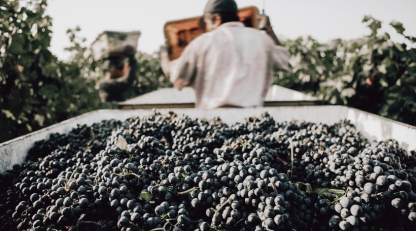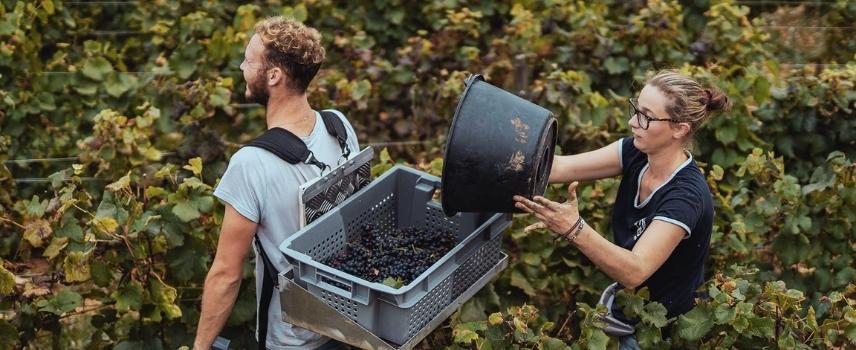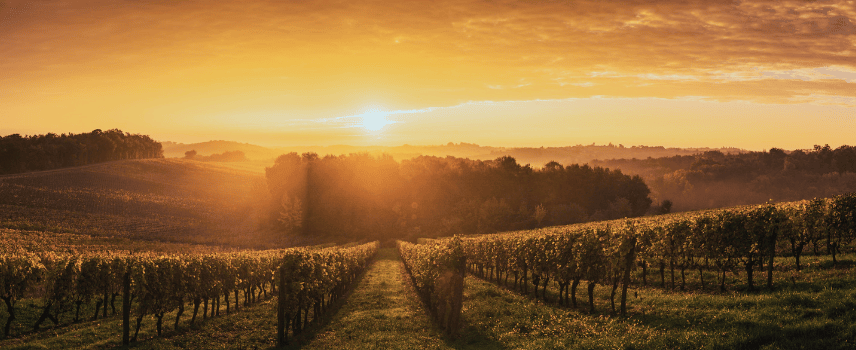- The 2024 French wine harvest is shaping up to be one of the smallest of the century so far.
- Burgundy’s 2024 vintage is estimated to be 25% lower than 2023, with scarcity being a key price driver for the region’s wines.
- Bordeaux is also facing declines, reaching its lowest volume since 2017.
The 2024 French wine harvest is shaping up to be one of the smallest of the century so far, with regions like Burgundy and Bordeaux hit particularly hard by adverse weather conditions. According to forecasts from France’s Agreste statistics unit, overall national production may decline by up to 18%, with mildew, poor fruit set, and frost reducing output in key regions.
What are the implications for the secondary market, especially considering the recent market downturn? This article explores how smaller volumes in 2024 could impact prices in Burgundy and Bordeaux, drawing on learnings from past vintages.
Scarcity in Burgundy
The 2024 vintage in Burgundy is being described as one of the most challenging in the past 50 years, according to Florent Latour from Maison Louis Latour. The Bureau Interprofessionnel des Vins de Bourgogne (BIVB) estimates harvest yields to be up to 25% lower than in 2023. The region has faced intense mildew pressure and adverse weather during flowering, resulting in poor fruit set.
Historically, supply constraints in Burgundy have driven price increases in the secondary market, as scarcity heightens demand among collectors. For example, the 2021 vintage, severely impacted by frost, saw a surge in auction prices for marquee producers like Domaine de la Romanée-Conti and Armand Rousseau. The same pattern could play out in 2024, as the prospect of another small vintage heightens the allure of top Burgundian wines.
However, this vintage presents complexities. While the scarcity narrative could support price gains, the current economic downturn might temper buying enthusiasm. Additionally, the challenging growing season could lead to quality variation across producers, making selectivity crucial for those looking to invest.
Bordeaux market implications
In 2024, Bordeaux is reportedly facing a 10% decline, reaching its lowest volume since 2017. The Conseil Interprofessionnel du Vin de Bordeaux (CIVB) has described the 2024 harvest as “historically low,” with output expected to fall below the already reduced 3.8 million hectoliters of 2023. This is due to a combination of adverse weather conditions, including downy mildew and rain during harvest, as well as a reduction in vineyard areas through a government-supported grubbing-up plan.
Despite the challenges, smaller harvests can still support price stability for Bordeaux’s top-tier wines. In 2024, the scarcity of high-quality offerings might provide an opportunity for investment-grade wines, particularly from classified growths. Investors seeking value could focus on estates with a strong track record of producing excellent wines in challenging years. Yet, the broader market downturn might limit the extent of price recovery, especially for mid-tier labels that lack the same scarcity appeal as Burgundy.
Learning from past vintages
Looking back at smaller harvests like 2017 and 2021 gives an insight into what to expect from 2024. Both years saw production levels dip below 40 million hectolitres due to extreme weather events, leading to temporary price spikes in Burgundy’s secondary market. The 2017 vintage, for instance, saw price rises for top Burgundy wines, driven by fears of limited availability. In 2021, the impact of frost once again drove auction interest, with investors flocking to secure allocations.
However, the 2024 market environment is different. With inflation and economic uncertainties weighing on consumer confidence, investors may be more selective, focusing on wines that promise both rarity and quality. Burgundy’s high starting prices could limit the scope of further price increases, while Bordeaux’s historically low output might stabilise prices for premium labels without igniting a full-fledged price surge.
The market environment
The 2024 vintage may not replicate the price exuberance of past short harvests, but it represents a moment of adjustment in the wine investment market. For Burgundy and Bordeaux, the interplay between reduced volumes, economic pressures, and strategic opportunities will shape the outlook. The true impact will become clearer once the wines are made, critics taste them, and the release prices are set, providing a more concrete sense of quality and investment potential.
WineCap’s independent market analysis showcases the value of portfolio diversification and the stability offered by investing in wine. Speak to one of our wine investment experts and start building your portfolio. Schedule your free consultation today.



